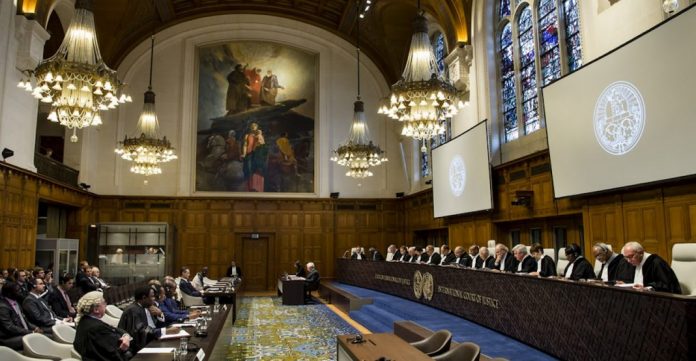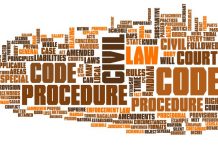This article is written by Uday Bhatia, a student currently pursuing BBA LLB from Vivekananda Institute of Professional Studies (affiliated to GGSIPU, New Delhi). This article accentuates the development of Pure Theory of Law & its shortcomings.
Table of Contents
Introduction
The doctrine of Grundnorm or Pure Theory of law is propounded by jurist Hans Kelsen, belonging to the positive school of thought. The theory is conceptualised on the ultimate objective of the law which is deterrence.
The literal meaning of Grundnorm is “Basic Norm”, which denotes the norm, order, or rule, constituting a core that forms an underlying basis of all the subsequent statutes. It is characterized as the master law or grand law which is the genesis for all the laws. Although, the theory is flawed in the sense that it raises questions about the authenticity and legitimacy of the Grundnorm itself, which is the manifestation of all the other laws. While Kelsen, trying to defend the honour of the theory, answers that the Grundnorm is ‘hypothetical’; that is interpreted from a particular point of time, as the manifestation of collective will (customs, traditions, beliefs) of the society. This is how the Grundnorm gains its authenticity and legitimacy.
Origin of Basic Norm
The usage of the term “Grundnorm” by Kelsen, can be closely traced back to the works of his colleague Adolf Merkl at the University of Vienna. Merkl enthusiastically and arduously worked on the law in the context of the hierarchical relationship of norms by employing structural research approach. This involved the fundamental norm which gives birth to all other norms and sub-norms. Each subordinate norm is authorized by its immediate superior norm, which in turn is authorized by its predecessor and likewise.
Kelsen has bifurcated legal orders into two types:
- Static Orders: these refer to general contouring norms such as “Don’t cause harm or injury to anyone”. From this statement, it could be derived that “no individual should cause the death of any other human being”.
- Dynamic Orders: the hierarchical structure of norms, wherein each norm manifests authorization from the immediate superior norm, tracing back to its parent norm or master norm, the Grundnorm which serves the purpose of authentication and validation.
Kelsen was impressed by this thesis. He adopted it, assimilated it and reproduced it in Pure Theory of Law and further came up with revised editions. The theory is propagated on the superior relationships between the norms and sub-norms, flowing from their genesis downwards. Thus, every norm and sub-norm will finally be traced back to the point of origin. This also connotes the centralization of power in the hands of sovereign authority disseminating legal orders.
In contemporary times, the prominence of the theory is evident in the various constitutions throughout the different states, with each respective constitution representing Grundnorm which forms the basis for all the subordinate laws.
In India, this theory is given implied cognizance since there exist three independent organs of the state performing their respective functions and all the statutes, orders, rules, provisions, etc. have to undergo judicial scrutiny to pass the constitutional test. If it contravenes, violates or infringes, even so slightly (especially the fundamental rights) it is there and then invalidated and declared void.

Legal Science
Kelsen has based his theory majorly on science and integrated it as ‘legal science’. As science works broadly on the principle of cause and effect relationship, similarly he has adopted this part in his theory. However, science is definite and certain as evaluation of experiments yields same and approximate results. This exactitude can’t be incorporated especially in matters dealing with human behaviour. This is due to the simple fact that human behaviour is unpredictable and varies. Since, the theory is based majorly on science, it is thereby an inexact or soft science. Kelsen terms the legal norm (social statement) as (Rechtsnorm) and its descriptive legal-scientific restatement as a legal proposition (Rechtssatz).
Austinian Connection
Kelsen’s theory has no bearing, whatsoever, of customs, traditions, creed prevalent in the society time immemorially. Kelsen especially finds judgements driven by morality irrational, as the objective of law diverges. Among the other ideologies and thoughts belonging to positive school, this is the most extreme as it mandatorily enforces the rule of law on its subjects, with no ambit of leniency and flexibility. According to him, there exists only black and white, i.e. right or wrong for which the delinquent has to face consequences. Thus, the theory is driven on absolutism and coerciveness.
Kelsen was much influenced by the Austinian theory of positive law. He also acquiesced that however, the law is stringent, to ensure its proper enforceability a machinery is required.
- Sovereign: It is the lawful authority which demands obedience from its subjects and holds its authenticity and legitimacy from the recognition from the individuals in the society.
- Command: It is an obligation, which is in the form of an order imposed by the sovereign, necessarily demanding obedience from its subjects, irrespective of their will.
- Sanctions: these are consequences in the event of disobedience of the command of the sovereign, as a punishment.
Thus, he described legal norms as coercion by a systematic use of sanctions, applied by agents or officials.
In modern law, the above three pillars are better referred to as legislature, executive and judiciary, respectively.
Although the ideological viewpoint of both Kelsen and Austin is mirroring, but the contribution of the circumstances which culminated it, is two poles apart. In Kelsen’s case, who is known as the father of the Austrian Constitution, evaded the country due to the rise of totalitarianism and was forced to resituate in Germany in 1930. But there also, with the Hitler gaining power & support and subsequently the reign of Nazism, the torture inflicted on foreigners, especially Jews, left him disheartened and compelled him to immigrate to US, California before going to Geneva. All these events created such an impact on his psyche, that culminated in propounding one of the most stringent & extremist doctrines.
For Austin, before being a professor of jurisprudence at London University, he served in the army during the Napoleonic Wars, practising in the Chancery Bar for 7 years and heading 2 government commissions. The time served in the army instilled in him the disciplined approach owing to the obedience orders of military superiors, reflecting the same in his theory.
Neo-Kantianism Perspective
According to Neo-Kantians, Paulson and Harris, Grundnorm’s transcendental presupposition has 3 ingredients:
- i) The objective normative force of the legal norms which implies the source that authorizes its authentication.
- ii) Categorization of the basic norm.
iii) Since presupposition of the basic norm, it is considered to be true.
Criticism
- Lack of Normativity & Oughtness: Kelsen was significantly influenced by Austin’s theory of positive law, therefore Kelsen’s theory also suffers from the major flaw. The presupposition that all laws need to be specifically enforced by the command of the sovereign implying there is no inherent normative force of habitual obedience to the laws or commands as such. Everything is done under an obligation or a compulsion because such obedience or conferment may be voluntary. This may be partially true but doesn’t fit in all circumstances. In modern international law, the agreements, treaties, covenants, conventions are binding on all the member-states themselves which doesn’t require any enforcement mechanism.
- No Bearing of Customs: The experience of going through dire and severe circumstances has made Kelsen very rigid and stickler in his approach towards law. The theory predominantly focuses on the harsh implementation of rule of law with zero consideration to the social, cultural, political, economic customs and traditions from which the order of legal society manifests.
- No Recognition to Judge-Made Law: the evolution of judge-made law is catalysed by the need of change in contemporary times. Nowadays in the modern states, the doctrine of separation of powers is not followed as a hard and fast rule. It has become flexible in its approach to thwart new tougher challenges, thus change becomes the need of the hour. This can only be done by devising a new ‘lenient mechanism’, where each of the organs of the state is able to share the workload amongst each other. Judge-made law, in this regard, is quasi-judicial power bestowed on the judiciary, which is a specialised institutional body to supplement the deficiency of work-action expected from the legislature.
- Theory Propounded with the View of Criminal Law only: the emphasis given on sanctions as the only medium of obtaining obedience is short-sighted, as use of penal provisions firstly, may not always necessarily ensure desired results and secondly, it is disproportionate when applied in the matters of civil law.
- Negative Approach: the theory propounded by Kelsen was highly negative in its approach, resulting from the culmination of disturbing experiences. He had propagated his theory on the presupposition that the individual subjects are unwilling to abide by the law and the sovereign could only enforce obedience from deterrence. The main objective of law in the society is to ensure peacefulness and betterment in an orderly society with equitable enjoyment of rights and opportunities. It isn’t created to terrorise the minds of the people.
- No Mechanism of Checks and Balances: while on the individual subjects of the society, the theory comprehensively imposes an obligation, on the other hand there are no checks on the powers of the independent organs of the state. This becomes imperative in contemporary times, with each organ of state apart from performing main functions and exercising powers, are also conferred with supplementary powers (quasi), it becomes susceptible to abuse.
- Narrow Perspective: the theory is promoted based on its application to a particular community. This is highlighted as one of the major drawbacks of this theory as there can’t be a universal application just based on the examination of a single community. The theory here is incomplete and thereby irrelevant as each state law is a manifestation of its own socio-cultural, economic and historical factors, which are customized for their applicability within their respective regions.
- Misguided Representation: In actual sense, the application of the Grundnorm in the modern-day scenario alludes that constitutions of various states are its “Grundnorm”. However, this is partially true. It is a universal truth that the constitutions all over the world are manifestations of the collective will of its citizens. Therefore, the collective will of the citizens is the true representation of Grundnorm which is recorded in the country’s most pious and sacred document as a true testament of it.
Conclusion
The Pure Theory of Law was propounded as one of the revolutionized doctrine with due regard to the time in which it was propounded. It surely received some serious flak from different eminent jurists of its time (20th century), but it is also true that it comprises some glaring lacunae. Nevertheless, this theory is the foundational stone based on which varied successive contemporary, complex theoretical principles & doctrines are tailored to suit the ever-changing needs of the evolving society.
References
- https://www.researchgate.net/publication/337402676_Grundnorm_of_Kelsen
- Constitution of India, 1949, Part III
LawSikho has created a telegram group for exchanging legal knowledge, referrals and various opportunities. You can click on this link and join:
 Serato DJ Crack 2025Serato DJ PRO Crack
Serato DJ Crack 2025Serato DJ PRO Crack










 Allow notifications
Allow notifications



